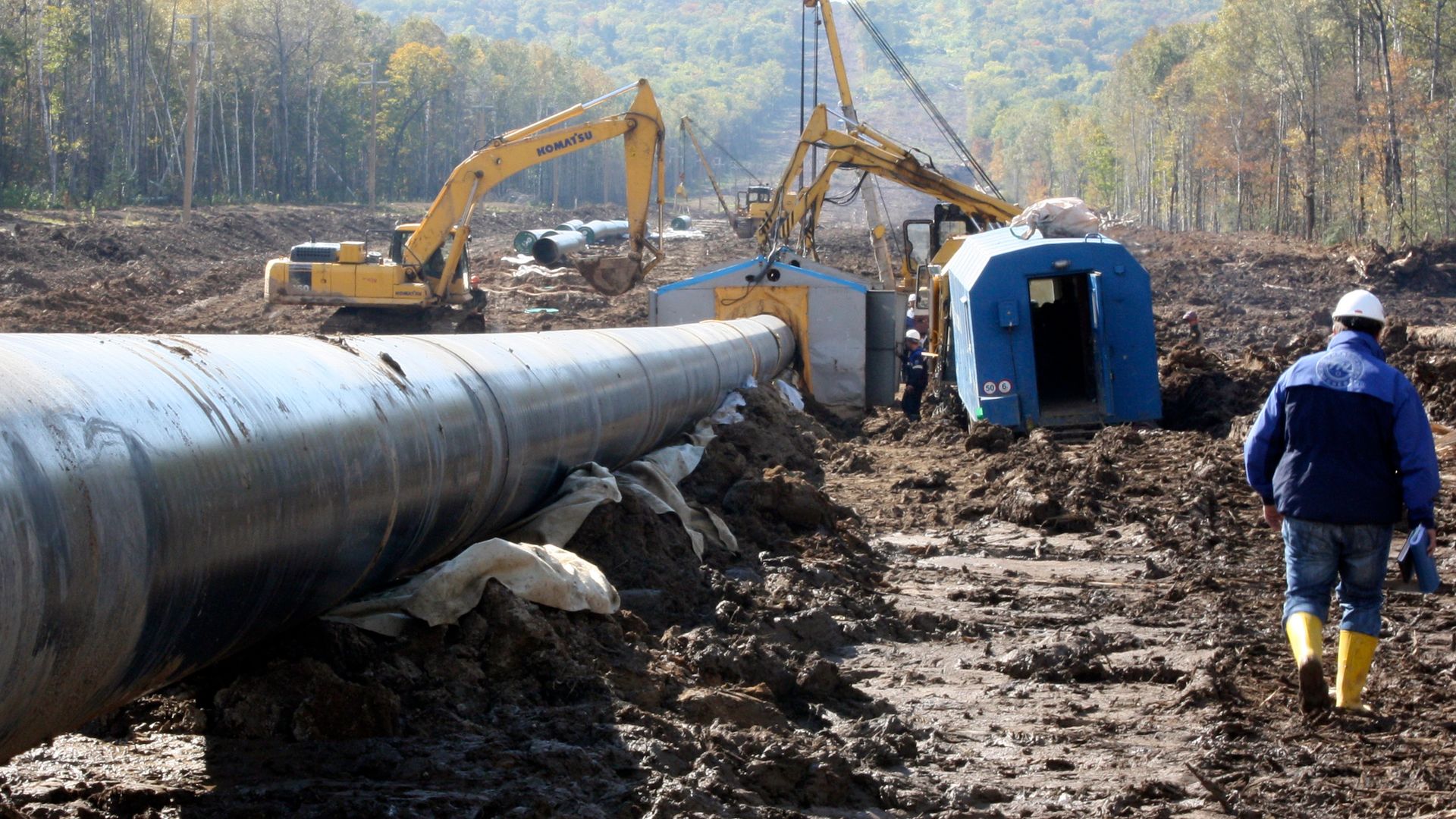
Commentary
-
Our commentary partners will help you reach your own conclusions on complex topics.
So, you know, Russia is this massive producer of motor oil and oil products? Why do I even talk about problems with them supplying the front when it comes to fuel supplies mean? Isn’t there plenty? Well, let’s look at this first from the American point of view. If you live in California or New York, you know, you know that gasoline prices are significantly higher than they are in places like Alabama or Texas. And it’s not just about where the crude comes from. It’s also about where it’s processed. So yes, California, New York have higher taxes. There’s also transport component, because the stuff is produced in one area refined in a secondary and then it has to be shipped the third area. In the case of Russia, most of the oil production roughly 70% of the total is in a corridor in southwestern Siberia, specifically Tatarstan and best Kyrgyzstan going north all the way up to the Arctic sea. And with the exception of Tatarstan, there are very few refineries in this area. So you have to then ship the oil by pipe several 1000 miles to another location where it is turned into refined product. And that refined product has to be shipped, typically over 1000 miles in order to get to the Ukrainian Front. There are refineries in places like Belgrade or near Rostov on Don, which is another reason why the Ukrainians have to take those two cities out of equation. But they’re really along that entire western periphery, because they used to supply the former Soviet satellite states of Central Europe as well as a little bit of exports to the wider world. Now, because the Russians have lost the Curt strait bridge, they can’t rail fuel to the southern front at all. And so most of this stuff has to either rail into eastern Ukraine or go by truck to everywhere else, which is one of the many reasons why the Ukrainians have been going after the truck fleet, and have destroyed most of the military truck fleet at this point. Another thing to keep in mind is that this is one of the many many reasons why the Ukrainians are spending so much time and effort developing technologies and getting equipment from the west to target oil infrastructure. And in that fuel tanks are absolutely the best thing to go after. And cargo trains are probably number two and then of course trucks are number three. Now you can technically target refineries. The problem is one drone or one missile or one 2000 pound bomb is only to do so much damage. refineries are huge. Most refineries once you include the standoff distance or something like three square miles, and then this forest of columns and pipes, and yeah, throwing some explosives into that is generally frowned upon. But when you have a non commercial grade explosive, like say diesel or gasoline or Napa, when you hit it with fire, yes, it burns. But it only explodes under very specific conditions. And so if you want to blow up an entire refinery, it’s going to take you a huge amount of ammo to do so. And this is one of the reasons why I always found myself talking down threats to the oil sector back in the 2000s and 2010s. When groups like Hezbollah, or the Iranians or al Qaeda, or the Islamic State would try to target a refinery, there’s just not a place where you hit it with a pinprick and use trigger a chain reaction. This is not the Death Star. And that means the Ukrainians have to follow by the same rules here. If they really want to take a refinery offline. It’s a huge amount of effort. And if they are going to target a piece of energy infrastructure that’s not a specific pipe, or fuel cell or train. The one they’re going to go after is the city of Sumatra in southern Russia. Samarra serves as a junction point for multiple pipes coming in from Northern Siberia, coming to and from Eastern Siberia coming up from the Caucasus and of course, going west, roughly 40% of Russian crude is capable of going through this nexus in addition to its refiners. Now, the Ukrainians probably do have the capacity right now to throw a drone or two into it. But again, they’re going to be dozens if not hundreds, or a lot more sabotage. So if you are going to see something a little deeper into Russia, besides what we’ve seen so far, which is kind of in in a band around that part of occupied Ukraine. What you’re going to see is the Ukrainians probably going after the pipes themselves, they won’t take things offline for very long pipes are easy to replace, especially in segments. But if they hit them enough, they disrupt the flows the refinery shut down. How do we know this happened in Chechnya during the 1990s. The Graziani region used to be the third largest refining center in the entirety of the former Soviet world and it was a significant oil producer as well. Now that’s all gone to zero, but it gives you an idea of the long grinding attritional fight that has to happen to really take the stuff offline for good. And so in the meantime, you go after fuel tanks, you go after fuel trains. Okay, next question.
-
Hurricane Helene hits US coast, Appalachia and beyond
Hurricane Helene hit Florida and Georgia overnight between Sept. 26 and 27 as a Category 4 hurricane, and accompanying storms will continue reaching deeper into the continental United States today. Dangerous flash flooding from the hurricane, known as storm surge, was some of the worst flooding that the Tampa Bay area has ever seen, and… -
Israel holds upper hand against Lebanon, Hezbollah and Iran
On Wednesday, Sept. 25, Hezbollah launched a ballistic missile at Tel Aviv in retaliation for Israel’s explosive pager attack that blew up devices across Lebanon. Although Israel’s defense systems intercepted the surface-to-surface missile, the attempted strike on Tel Aviv marked a significant escalation by Hezbollah. Since the siege on Gaza began, shortly after the Oct. 7, 2023,… -
The Sinaloa Cartel civil war
Fears of a civil war within the Sinaloa Cartel are growing as violence between competing factions within the cartel continues. The Mexican Army has dispatched around 600 elite troops to Sinaloa to help quell those fears, in addition to roughly 2,200 regular soldiers and National Guard. Watch the above video as Straight Arrow News contributor… -
New Ukrainian weapons hit Russia where it hurts
Ukrainian drones struck a major Russian ammunition depot, triggering a massive explosion that was captured on camera. According to the Ukrainian military, 2,000 tons of munitions had arrived at the depot before the attack. Over the past two years, Ukraine has significantly increased its domestic drone production, allowing it to scale up attacks on military… -
Weighing social costs vs. economic benefits on immigration
Global human migration is one of the defining elements of our current historical era, according to the United Nations. Migrants face both the incentives to leave — forced out by climate change, crime and corruption, extreme poverty or violence — and incentives for where to go, based on available job opportunities and so on. Migration…
Latest Stories
-
 Dept. of Defense
Dept. of Defense
A return to the Cold War? UK poised to house US nuclear weapons yet again
-
 Getty Images
Getty Images
Melania Trump backs ‘Take It Down Act’ targeting AI deepfake, revenge porn
-
 Getty Images
Getty Images
Top FBI official in NY retires amid apparent conflict with Trump admin
-

How US crypto holdings compare to other nations
-
 Getty Images
Getty Images
Israel proposes alternative plan for hostage deal with Hamas
Popular Opinions
-
In addition to the facts, we believe it’s vital to hear perspectives from all sides of the political spectrum.
Latest Opinions
In addition to the facts, we believe it’s vital to hear perspectives from all sides of the political spectrum. We hope these different voices will help you reach your own conclusions.
The opinions published in this section are solely those of the contributors and do not reflect the views of Straight Arrow News.





















Latest Commentary
We know it is important to hear from a diverse range of observers on the complex topics we face and believe our commentary partners will help you reach your own conclusions.
The commentaries published in this section are solely those of the contributors and do not reflect the views of Straight Arrow News.
Dr. Frank Luntz
Pollster and Political Analyst‘Biased’: What Americans think of ‘mainstream media’
‘Getting rid of them’: Americans discuss Trump and immigration
‘Woke’: Why some Biden 2020 voters backed Trump in 2024